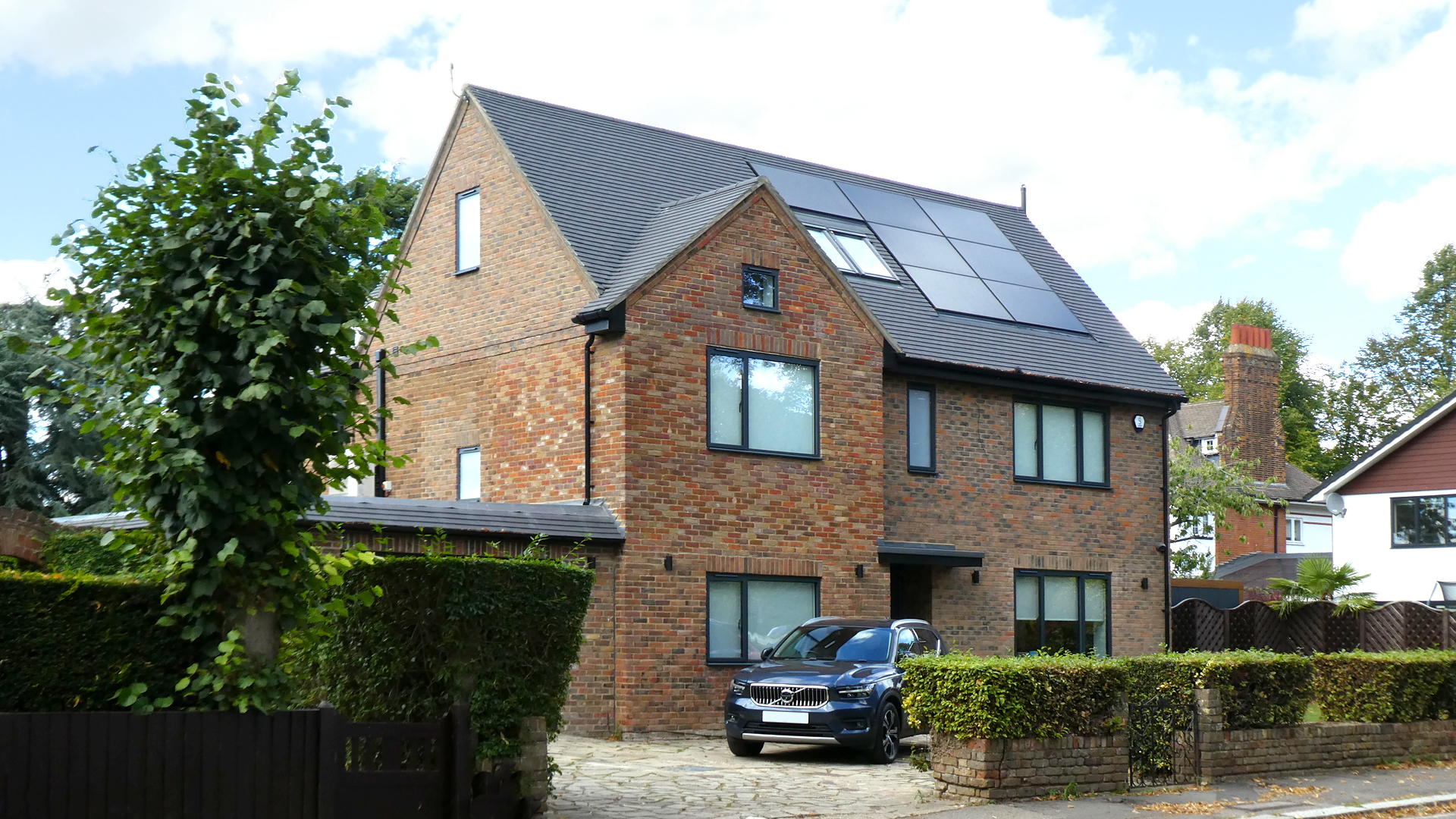Is It Cheaper or Better to Retrofit or Build New?
If you own an older or rundown property – or one that’s been extended so many times the layout feels inefficient and compromised – at some point you will wonder whether it would be better to extend and renovate or to start again. Financially, environmentally and practically, it’s a really big decision. There’s no absolutely right answer, but, we can help you to weigh up your options before committing.

The first step is understanding what you’re dealing with.
Commissioning a surveyor’s condition report will highlight maintenance issues such as damp, or structural movement. Knowing the health of the structure helps to formulate a plan and inform your budget.
Planning constraints are another important factor. If the building is listed, in a conservation area or otherwise protected, demolition may be restricted or certain features might have to be retained.
Don’t forget the surrounding context either – party wall agreements, access rights and neighbour sensitivities can all affect feasibility and costs.
When retrofit makes sense
Renovating or retrofitting can be a pretty major project. But, done well, it can turn a tired building into a near new one at a fraction of the embodied carbon cost of rebuilding.
If the bones are good – foundations, walls and roof – upgrading insulation, windows and services can achieve an excellent energy performance and heaps of comfort.
Many older buildings also have features worthy of keeping: high ceilings, mature gardens, or perhaps some lovely decorative brickwork that would be expensive or impossible to replicate in a new building. Upgrading an existing building can also avoid the cost, uncertainty and delays of securing full planning permission for a new building. If you’re keeping much of the original fabric, the project will usually carry a lower environmental footprint by reducing the need for new materials.
When demolition and new build may be better
Sometimes a clean slate is the more practical or even the greener option. Where there’s major subsidence, widespread damp or poor quality construction, the cost of repairs may exceed the cost of building new.
Modern fire safety, accessibility and energy standards can also be challenging to meet within an old shell. If bringing the existing structure up to standard is excessively intrusive, it may be simpler to rebuild. A new build also offers freedom of layout – allowing you to create a more efficient plan, improve daylighting and incorporate future ready services.
Financial considerations
Retrofit can appear cheaper at first glance but fiddling with and upgrading existing fabric can be a costly exercise. New builds may cost more upfront but generally they’re most cost certain at the outset. VAT treatment can also tip the scales: new builds can be zero rated, while most refurbishments attract 20% (with some exceptions at 5%).
Programme length matters too – in some cases demolition and rebuild can be faster, but occupants and possessions will need to relocate which can be costly.
While grants and incentives change over time, it’s worth checking what support might be available. Local councils, energy agencies and national government sometimes run schemes to encourage retrofit, energy upgrades or the use of low carbon technologies. Even if a grant won’t cover the full cost, it may tip the balance between options.

Environmental factors
From a sustainability perspective, retaining an existing structure typically saves embodied carbon by avoiding demolition waste and new materials. That said, operational energy performance also matters.
Whichever route you take, salvaging bricks, timbers and fittings can further soften environmental impact, as can careful specification of the new fabric interventions.
Managing disruption and phasing
Renovating or rebuilding inevitably causes disruption. The difference is in how much and when. Retrofitting can often be phased so parts of the property remain usable, which is especially valuable for businesses that need to keep operating; or homeowners who can’t move out. New builds, on the other hand, typically require vacating the site or relocating activities until completion – though they can sometimes be faster overall. Thinking through how your daily routines or operations will be affected, and how you’ll accommodate staff or residents during works, is just as important as budgeting for the building itself.
Regulatory and planning
Both retrofit and new build projects must comply with current Building Regulations covering safety, insulation, fire and accessibility. New buildings tend to need to meet more rigorous standards, but an extensive retrofit can trigger complicated compliance requirements.
Planning permission is often simpler for upgrades and extensions, while a new build typically needs full approval and can attract more scrutiny. Some local councils actively promote retrofit over demolition as part of their sustainability policies.
Every property is unique, so a rough comparison rarely tells the whole story.
A good architect can prepare feasibility studies comparing extension / retrofit and rebuild options. These can include concept layouts, preliminary cost and timescale estimates, energy performance projections and planning / regulatory risk commentary. With that information, you can weigh the numbers, environmental impact and day to day experience of the building before you commit.
Ultimately, the choice between retrofit and demolition isn’t purely about cost. It’s about value – comfort, energy bills, character, environmental footprint and how well the building supports its users in the years ahead. Taking the time to explore both options at the earliest stage of your project can save money and headaches later.
Weighing up retrofit vs rebuild
There are no right or wrong answers – use these prompts to help clarify your priorities.
* Longevity: How long do you intend to own or occupy this property?
* Location: Is the site ideal, or would you consider relocating rather than rebuilding here?
* Building fabric: Is the structure sound enough to justify retaining, or are defects widespread?
* Energy performance: How important are low running costs and comfort to you?
* Character vs. clean slate: Do you value the existing building’s character, or would you prefer a completely new look?
* Disruption tolerance: Can you live or operate alongside phased works, or do you need a clear break and a faster handover?
* Budget realism: Have you allowed a contingency for surprises – in either retrofit or rebuild scenarios?
* Funding: Have you checked for grants, loans or tax incentives that could influence the decision?
* Long term value: Which option will give you the best return in comfort, usability and environmental performance over time?
We help homeowners and commercial clients weigh up their options with clear, practical advice – from early feasibility studies to detailed retrofit designs.


